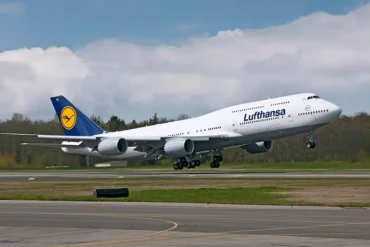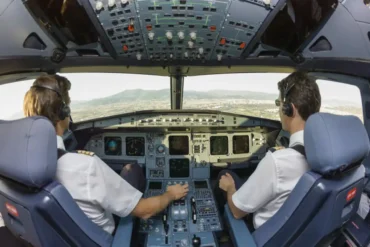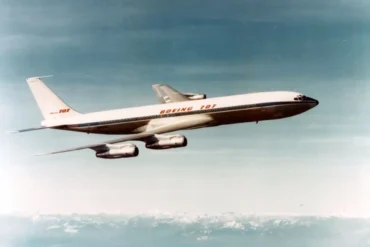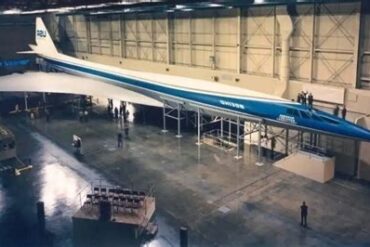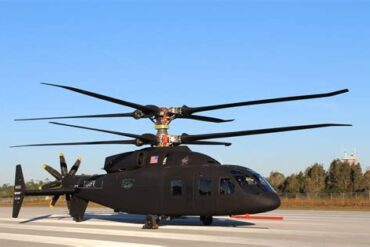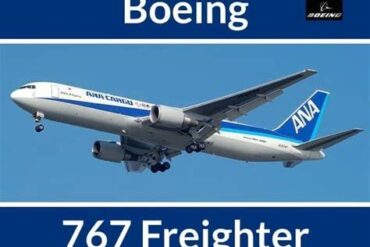Boeing, often in the shadow of its well-known rival Airbus, harbors another competitor – Lockheed Martin. While the aviation world fixates on Boeing vs. Airbus, the Boeing vs. Lockheed Martin rivalry silently shapes the industry. Let’s delve into how these aviation giants stack up.
Examining the US air fleet, a staggering 80% comprises Boeing or Lockheed Martin aircraft, including frontline military jets. Globally, this trend echoes, especially in Western militaries.
In this analysis, we’ll strip away the colossal financial figures and focus on Boeing and Lockheed Martin as aircraft manufacturers. Let’s explore the legacy they’ve crafted, transcending their multibillion-dollar status.
Boeing Unveiled
Founded in Seattle in 1916 by William E. Boeing, the company’s humble origins trace back to sea planes. Today, Boeing spans every facet of aviation, from defense to commercial. Their portfolio includes military marvels like the F-15, F/A-18, KC-46 tanker, and the iconic Apache attack helicopter. In the commercial realm, Boeing’s legacy shines through the 737, the iconic 747 dubbed the “Queen of the Skies,” and the innovative 787 Dreamliner.
Lockheed Martin’s Evolution
The journey of Lockheed Martin begins in 1912 as the Alco Hydro-Aeroplane Company, later morphing into the Lockheed Corporation in 1934. The pivotal merger with Martin Marietta in 1995 birthed Lockheed Martin. This powerhouse is a military-centric force, boasting a diverse range of military equipment, including the groundbreaking F-35 Lightning II – the epitome of a multirole fighter. Other prominent creations include the C-130 Hercules, Aegis missile defense system, and the THAAD missile defense system.
Similarities Between Boeing and Lockheed Martin
Boeing and Lockheed Martin share a fundamental identity as engineering powerhouses entrenched in aviation. Originating in and centered on aviation, both giants manufacture aircraft, missiles, and rockets. Their creations resonate not just within the US military but find deployment in major global forces, fostering comparable reputations from the UK to Brazil, Japan to China.
This parallel extends to their robust Research and Development (R&D) pursuits, consistently ranking in the top echelons for monetary investments. Beyond borders, both companies contribute significantly to the local economies of aviation-rich cities like Seattle, Washington, and Palmdale, California, sustaining intertwined relationships.
Their global imprint is evident through international subsidiaries, reaching countries such as Canada and the UK, a testament to their expansive manufacturing prowess.
Differences Between Boeing and Lockheed Martin
Diverging paths emerge in their production focus. Lockheed Martin, a military specialist, strictly engages in military contracting. In contrast, Boeing wears a dual hat, functioning as a commercial aircraft manufacturer and a military contractor.
This variance extends to their size differentials, with Boeing towering over Lockheed Martin in revenue, profit, employees, products sold and delivered, and new contracts secured.
The dichotomy deepens in R&D approaches. Lockheed Martin tailors its innovations meticulously to meet the specific needs of world militaries, while Boeing adapts military-oriented R&D breakthroughs for commercial applications.
Crucially, leadership styles define another contrast. Boeing, post the 1997 merger with McDonnell Douglas, prioritizes business executives focused on stock price elevation. Lockheed Martin, underpinned by engineering values, places quality aviation product creation at the forefront, with shareholder returns taking a secondary role.
Comparing Lockheed Martin and Boeing Aircraft
Let’s dive into the fascinating realm of aircraft, comparing two aviation titans – Boeing and Lockheed Martin – assessing their iconic flying machines that dominate both military and commercial skies.
Lockheed C-5 Galaxy vs Boeing 747
Unveiling the heavyweight contenders, the Lockheed C-5 Galaxy and Boeing 747, sparks a clash of colossal transporters. Originating from a shared military lineage, the C-5 Galaxy flaunts superiority in sheer size and cargo versatility. While the 747 claims cultural eminence, ferrying everyone from Pan Am passengers to US Presidents, it bows to the C-5 in military might.
Lockheed Martin F-16 vs Boeing F/A-18
In the dogfight of fighter jets, Lockheed Martin’s F-16 takes numerical dominance, boasting the world’s largest fleet. Yet, Boeing’s F/A-18 Hornet proves its mettle with unparalleled versatility, excelling in diverse missions, including carrier landings and reconnaissance roles.
Sikorsky CH-53 vs Boeing CH-47 Chinook
Navigating the helicopter domain, Lockheed’s Sikorsky CH-53 Sea Stallion challenges Boeing’s CH-47 Chinook. The Sea Stallion’s impressive range and ferry capabilities set it apart, but the Chinook emerges as a cargo behemoth, trumping with colossal internal volume and a unique history as a commercial passenger aircraft.
Lockheed Martin F-35 vs Boeing X-32
In the realm of advanced fighter jets, Lockheed Martin’s F-35 stands tall against Boeing’s X-32. The F-35’s selection for the Joint Strike Fighter program attests to its superiority, outclassing the X-32 in range, speed, and STOL performance. However, the X-32’s simpler design sparks debates over affordability, presenting an alternative narrative.
Corporate Makeup and Aircraft Manufacturing
Beyond the skies, the corporate makeup defines their divergence. Boeing, a commercial juggernaut and defense powerhouse, caters to Wall Street, while Lockheed Martin is an engineering-centric defense specialist. Boeing’s colossal size and global recognition overshadow Lockheed Martin in the business arena.
As aircraft manufacturers, nuances emerge. Lockheed Martin takes the spotlight in recent decades, delivering standout aircraft like the F-35, surpassing counterparts like the X-32 and presenting upgraded F-16s and CH-53 variants, highlighting its prowess in crafting superior flying machines.



